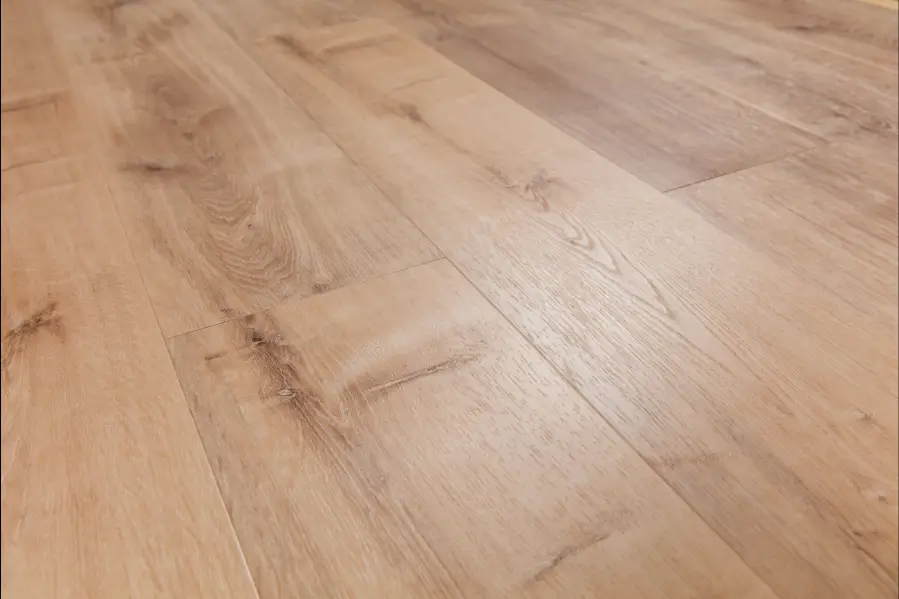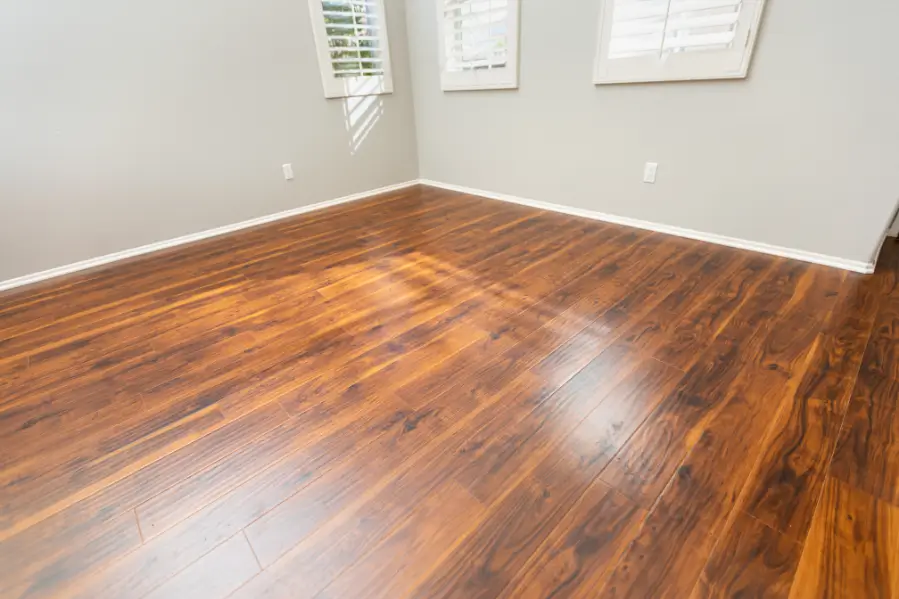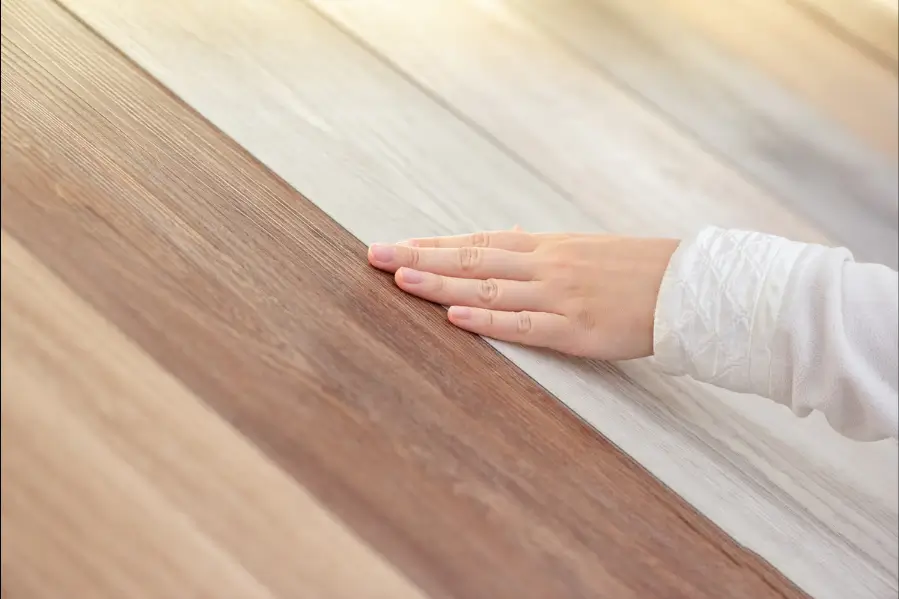Laminate floorings are the favorite choice for those homeowners, for which they withstand wear and tear and aesthetically please the view. On the other hand, its low maintenance creates a warm, inviting comfort in one’s home; however, despite all such qualities, it is also not immune to damage in any manner.
Over some time, minute scratches up to loose planks may even appear due to chips, bubbles, etc. Early intervention for these problems preserves the bright sheen appearance of the floor and deters it from further problems.
Sometimes, laminate flooring repair does not need to be a full replacement. Most common problems can be solved easily and cheaply with the right tools and techniques.
In this article, I will outline practical methods of repairing laminate floors based on the nature of the damage: from minor scratches to more serious repairs. You will learn how to make your floor look good again and ensure it lasts for years.
Understanding Common Cause of Laminate Floor Damage
Laminate flooring is well known for its durability and resilience, but it may still be damaged by some types of damage over time. Understanding the common causes of laminate floor damage may help homeowners take preventive measures and extend the life of their floors.
- Foot Traffic: High-traffic areas cause scratches and wear on laminate floors, mainly from tracked-in dirt.
- Heavy Furniture: Heavy furniture can dink laminate or leave scratches if dragged.
- Pets: The claws of pets and the bowl of water can be damaged by laminate.
- Sunlight: Continuous exposure to the sun leads to fading.
- Humidity and Moisture: Laminate gets sensitive to moisture changes that may lead to swelling and warping.
How to Repair Laminate Flooring? A Comprehensive Guide

This guide will walk through each type of damage step by step to help you return the beauty of your floors without needing to replace expensive bits.
Step 1: Assess the Extent of Damage
As a first step, inspect the damaged area and decide how serious it is. Repair touch-up solutions may be suitable for minor scratches or scuffs; on the other hand, you may need to replace planks that have been water-damaged or warped.
Identify the Type of Problem: There are different types of problems such as scratches, dents, gaps, and swelling caused by moisture. It needs to be diagnosed first before you decide on what type of materials and procedures you will need.
Step 2: Gathering Materials
For most repair jobs, you would require a laminate repair kit, a putty knife, and some wood glue in case the planks are loose. Laminate repair kit Includes wax crayons, putty, and markers, available at most home improvement stores.
Tools You’ll Need for Laminate Floor Repairs
| Tools | Purpose |
|---|---|
| Putty Knife | To apply filler putty over chips and dents |
| Pull Bar | Its use while closing the gaps on the plank |
| Soft Cloth | Use to polish the whole repaired section |
Materials You’ll Need for Laminate Floor Repairs
| Materials | Purpose |
|---|---|
| Laminate Repair Kit | For addressing scratches and minor damage |
| Wood Glue | Perfect for re-securing loose planks |
| Replacement Planks | Necessary for replacing planks with water damage |
Step 3: Repairing Minor Scratches and Scuffs
Hardware stores carry laminate scratch repair kits, one resemble for hardwood flooring repair which consist of wax crayons, putty sticks, and markers designed to fill in and cover small scratches. Make sure to get a kit that matches the color of your laminate.
Then do the application process where you will properly clean the scratched area allowing it to dry out entirely. Apply the wax or marker gently and fill up the scratch until it disappears. Buff the area using a soft cloth to blend the repaired spot with the rest of the flooring.
Step 4: Fixing Chips and Small Dents
For chips and small dents, use laminate putty filler in a color that closely matches your floor color. Kits of putty are generally sold in colors that mix well with common wood finishes and tones. Use the putty knife to smooth out the putty in the chip.
Let it dry and lightly sand it if needed for a smooth finish. Make sure that the repair area blends well with the surrounding flooring.
Wood Filler for durability: If you have deeper dents, wood filler is an ideal option for durability. Use the filler and lightly sand to blend with the surface if necessary.
Step 5: Repairing Planks with Water Damage
Water can swell, bubble, or warp planks. If the laminate damage from moisture exposure is extreme, it is often best to replace the affected planks. Insert a replacement plank of the same style, color, and thickness, locking it back into place and reinstalling the baseboards.
Click-Lock Installation System: Laminate flooring that makes use of a click-lock installation system can be taken apart relatively easily. Start with removing the baseboards in the damaged area and unlocking the plank by loosening the planks around it.
Step 6: Repairing Loose or Moving Planks
Now, If the laminate planks have loosened, applying wood glue on the loosened edges will help secure them. Put a small amount of glue on the loosened edges and then press the plank back firmly in place. Wipe off excess glue to avoid the accumulation of residues.
Adding Underlayment if Needed: If the plank is loose because of a lack of underlayment, you can add additional material under the loose area if possible. This will halt the plank from continuing to move and give added support.
Step 7: Filling the Gaps between the Laminate Planks
Sometimes the laminate can shift and leave spaces between the planks. You can use a pull bar to help slide the planks back in. You simply tap gently along the edges to close up the gaps.
Using a Gap Filler: When the gap is too deep to be covered by moving, use laminate gap fillers to protect moisture and debris from being trapped in between planks. That solution is excellent for laminate floating floors where plank expansion/contraction naturally occurs.
When to Consider Professional Help!
Although most of the common laminate flooring issues can be handled with simple DIY restoration, there may be other instances that should be called in for professionals:
- Extensive damp areas are often best checked by a professional to avoid mold or structural damage.
- Scratches that are too deep for DIY to hide can be sanded and recoated by a professional or, in extreme cases, replaced by new laminate planks.
- Persistent gaps or loose planks might indicate underlying problems with floor leveling. A professional assessment and repair of uneven subfloors may be needed to ensure such issues do not persist.
DIY vs Professional Repair
The decision between doing it yourself and professional repair for laminate flooring installation is usually based on the level of damage and your comfort in home improvement tasks. Small problems can be fixed DIY at a very low cost and to your satisfaction. However, severe damage usually requires professional help for quality and durability.
Additional Tips for Laminate Floor Maintenance and Prevention

Some of the significant points that have been listed here include suggestions for damage minimization:
- Utilize Furniture Pads: Place furniture pads directly under the bottoms of the chair and table leg bottoms to prevent dents and scratches.
- Avoid Excessive Moisture: Clean spills immediately, and avoid using too much water when mopping. Damp mops are fine, but never allow laminate to sit in standing water.
- Sweep Regularly: Vacuum regularly to remove debris that can scratch the floor surface. For periodic deep cleaning, use a laminate-specific cleaner.
- Control Indoor Humidity: Humidity swings from extreme levels cause plank expansion and contraction. Use a humidifier or dehumidifier to maintain an even environment. Clean with a damp mop, not wet, and maintain indoor humidity between 35-55%.
Flooring Repair Services Offered by Smart Remodeling LLC
Smart Remodeling LLC offers comprehensive home remodeling services, including expert laminate flooring repair to restore your floors to their original beauty and durability.
Our skilled team carefully assesses any floor damage and uses high-quality materials for a seamless match with your existing flooring. Whether you’re dealing with small scratches, chips, gaps, or water damage, we have you covered.
Additionally, our consulting services offer guidance on the best maintenance practices to ensure your laminate floors remain a long-lasting investment. Rely on Smart Remodeling LLC to keep your floors looking flawless year after year.
Final Thoughts!
With the right techniques and tools, laminate flooring repairs can be manageable and rewarding. By following this guide, you will be able to handle various types of damage effectively, saving time and money on replacements while keeping your floors in pristine condition.
FAQs
1. How can I fix scratches on laminate flooring?
Light scratches can be filled with laminate repair kits. Such kits usually contain wax crayons or markers to match your color. For deep scratches, it may be required to apply putty and fill up the damaged area.
2. Can a steam mop be used on laminate floors?
It’s not recommended to use steam mops on laminate flooring. High heat and moisture are both damaging to the laminate and the protection layer.
3. How long does laminate flooring last?
Laminate flooring lasts 15-25 years, depending on the amount of use, quality, and level of maintenance practices.
4. What should I do if I notice buckling in my laminate floor?
Buckling is often caused by moisture or improper installation. Identify the source of moisture, address it, and if needed, consult a professional to assess the situation and suggest a solution.






